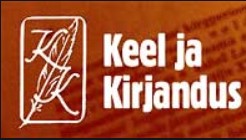Jamaicast Pariisi ning sealt Tartusse tagasi. Lydia Koidula maailmavaatest ja mugandamisstrateegiatest tema saksa eeskujude valguses
The mental horizons of 19th-century Estonian national movement were largely modelled on German examples, while the building of Estonian national identity and the rise of the self-awareness of the Estonian people were made possible through the adaptation of national romantic ideology to local conditions. Up to the end of the 19th century Estonian literature largely consisted of adapted translations from German sources, many of which have not, however, been pinpointed as yet. The article was inspired by the discovery of two authors who served as literary models for Lydia Koidula. This discovery expanded our understanding of Koidula’s sources and revealed that she drew not only on conservative authors of Volksbücher and a couple of other 19th-century authors, but also on two liberal German writers – Theodor Mügge and Luise Mühlbach. Mügge’s Eduard Montague (1845) was the source text for Koidula’s story Juudit ehk Jamaika saare wiimsed Maroonlased /Judith, or the Last Maroons of the Island of Jamaica/ (1870), while Mühlbach’s Kaiserin Josephine: ein Napoleonisches Lebensbild (1861) served as the source text for Koidula’s Martiniiko ja Korsika /Martinique and Corsica/ (1869/1874). Koidula selected Mügge’s and Mühlbach’s works because of their resonance during the heyday of the Estonian national movement, which can also be termed as Koidula’s political breakthrough. Both books deal with the French Revolution, which is recounted from different viewpoints – the Old and the New Worlds, European power centres and their peripheries. A comparison of the German originals with Koidula’s adaptations leads to the conclusion that there is a notable difference in the adaptation strategies of the two texts. Mügge’s adaptation is rather close to the original text except for a few additions important for the Estonian national movement. In Mühlbach’s adaptation, however, the focus is shifted from the author’s intent in order to give a more thorough overview of the revolution, its causes and effects. Both strategies speak of Koidula’s ambition to explain the formation of a people and its actions in revolutionary times. Such identification of literary models serves to create an integral picture of the cultural and ideological environment moulding Koidula’s worldview. A comparison of the source and adapted target texts enables a better understanding of the means used by Koidula to construct her literary and ideological world. Her method was not one of servile imitation of foreign examples, but that of creative adaptation and localisation.
More...

